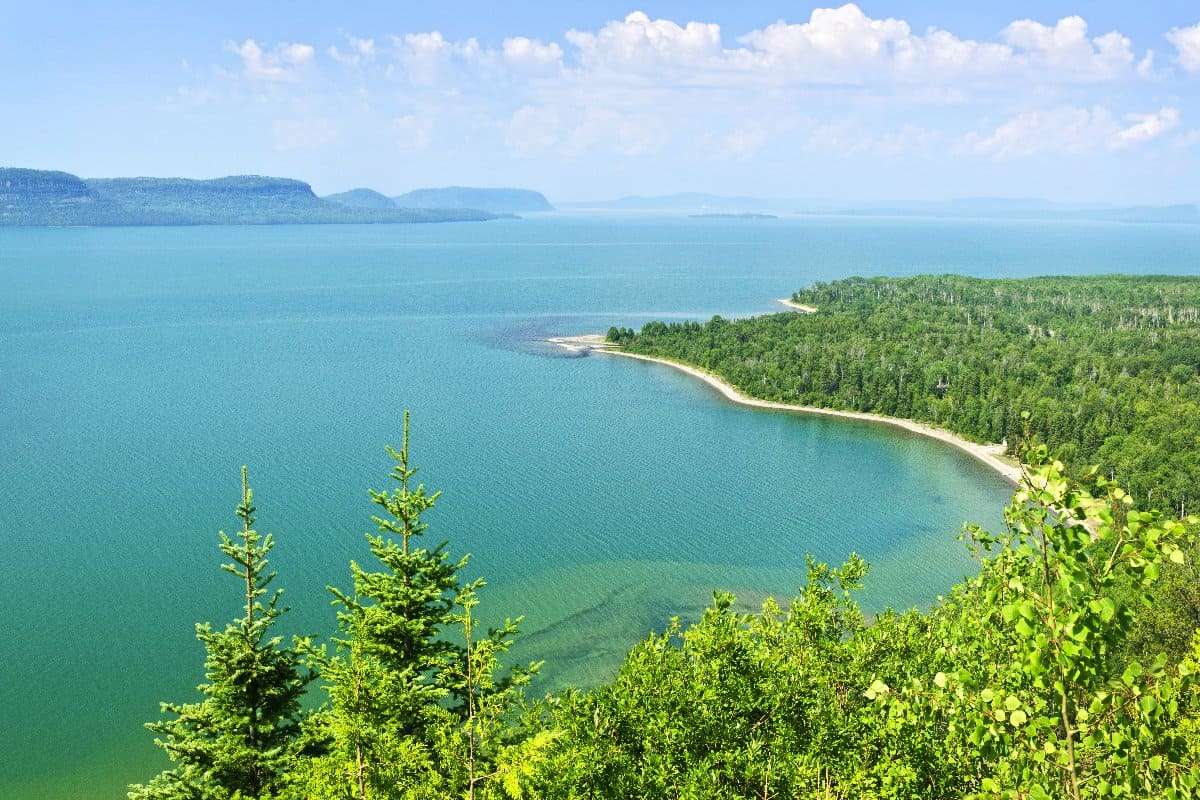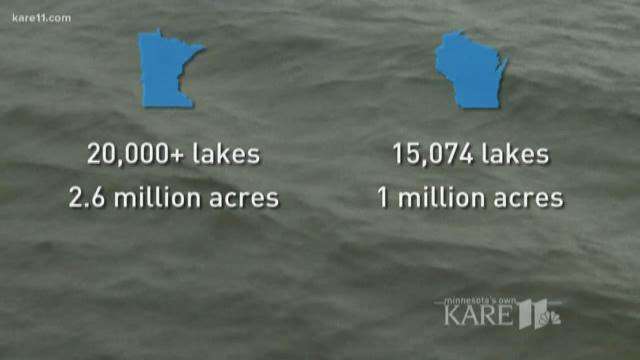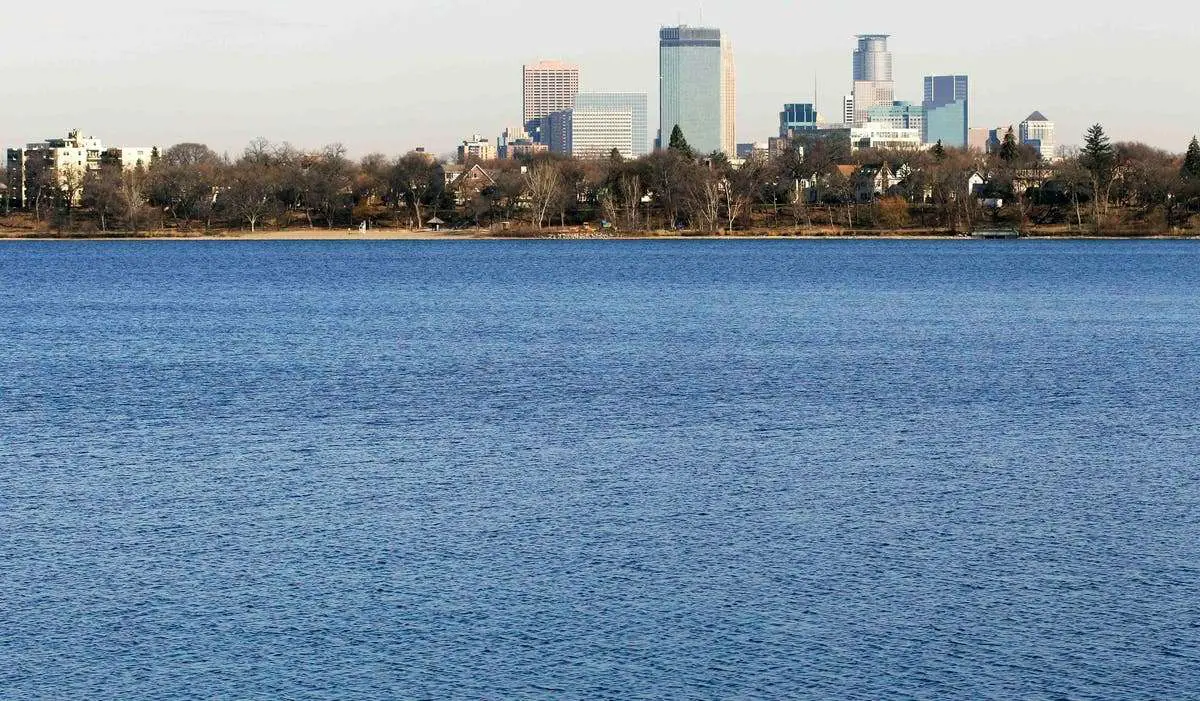If you’re considering off-grid living, Minnesota might just be the perfect place for you. Known as the land of 10,000 lakes (spoiler alert: there are actually over 20,000), this state offers a picturesque landscape and abundant freshwater sources. Although winters can be extremely cold, heating becomes a primary concern. But fear not, renewable energy options like solar power and wind power can help you stay warm and cozy. With a low crime rate, high standard of living, and a variety of job opportunities, Minnesota has been voted the second-best state to raise a family. However, don’t forget to prepare for the state’s natural disasters, including tornadoes, floods, blizzards, and heatwaves. So pack your bags and get ready to embrace the beauty and challenges of off-grid living in the great state of Minnesota.

Geography and Lakes
Minnesota’s 20,000+ Lakes
When it comes to geography, Minnesota is truly a remarkable state. Its nickname, “Land of 10,000 Lakes,” might be a bit of an understatement. In reality, the state has over 20,000 lakes, creating an abundance of beautiful and serene landscapes for residents and visitors to enjoy. These lakes vary in size, from sprawling bodies of water like Lake Superior to small, hidden gems nestled among the forests. Whether you’re looking to go fishing, boating, or simply take in the natural beauty, Minnesota’s lakes offer endless opportunities for outdoor enthusiasts.
Diverse Wildlife Population
Alongside its numerous lakes, Minnesota is also home to a diverse wildlife population. From bison roaming the prairies to black bears and wolves in the forests, the state provides a unique opportunity for wildlife enthusiasts to observe these majestic creatures in their natural habitats. Additionally, Minnesota’s lakes and rivers are teeming with various fish species, making it a popular destination for anglers. Whether you’re an avid hunter, fisherman, or simply appreciate the wonders of nature, Minnesota’s diverse wildlife population is sure to captivate and inspire you.
Off-Grid Living
Living off the Grid in Minnesota
For those seeking a more self-sufficient lifestyle, Minnesota offers ample opportunities for off-grid living. Living off the grid means being disconnected from public utilities such as electricity, water, and gas, and relying on alternative sources for your needs. In Minnesota, off-grid living is permitted by law, allowing residents to build their own sustainable systems and live in harmony with nature. However, it is important to be aware of the specific restrictions and regulations that govern off-grid living to ensure compliance with the law.
Heating Concerns in Cold Winters
One of the primary concerns for off-grid living in Minnesota is heating, especially during the harsh winter months. With temperatures dropping well below freezing, it’s crucial to have a reliable heating system in place to ensure the comfort and safety of off-grid residents. Many off-grid homeowners in Minnesota rely on alternative heating sources such as wood stoves, propane heaters, or geothermal systems. These heating options provide both warmth and peace of mind, even in the coldest of winters.

Population and Cities
Population Statistics
Minnesota is home to a population of over 4.6 million people. While this may not seem like a large number compared to some states, it is important to note that the majority of the population lives in urban areas. This means that the state’s cities and towns are bustling with activity and offer a wide range of amenities and services to residents. Whether you’re looking for cultural attractions, dining options, or job opportunities, Minnesota’s urban areas have much to offer.
Urban Areas and Smaller Towns
The largest cities in Minnesota are Minneapolis and St. Paul, collectively known as the Twin Cities. These vibrant metropolitan areas are the economic and cultural centers of the state, offering a diverse range of industries, entertainment options, and educational institutions. However, Minnesota is not solely defined by its urban centers. There are also numerous smaller towns throughout the state, each with its own unique charm and sense of community. These smaller towns provide a more relaxed and close-knit environment, making them ideal for those seeking a quieter pace of life.
Largest Cities: Minneapolis and St. Paul
Minneapolis and St. Paul, as the largest cities in Minnesota, are known for their thriving economies, vibrant arts and cultural scenes, and modern infrastructure. In Minneapolis, you’ll find a bustling downtown area filled with skyscrapers, trendy restaurants, and popular sports stadiums. St. Paul, on the other hand, has a more historic and charming feel, with beautiful old buildings and a focus on preserving its heritage. Both cities offer a wide range of employment opportunities, educational institutions, and recreational activities, making them desirable places to live for many residents.
Family-Friendly State
Second-Best State to Raise a Family
If you’re looking for a family-friendly state, Minnesota might just be the perfect choice. In fact, it has been voted the second-best state to raise a family. With its low crime rate, high-quality education system, and abundance of recreational opportunities, Minnesota provides an ideal environment for families to thrive. Whether you’re exploring the state’s many parks and playgrounds, taking advantage of its excellent schools, or participating in community events, there are endless opportunities for families to create lasting memories and build strong relationships.
Low Crime Rate
Safety is a top priority for families, and Minnesota delivers in this aspect with its impressively low crime rate. Whether you’re living in the urban areas or the smaller towns, you can feel confident in the state’s commitment to public safety. Minnesota’s communities are known for their strong sense of community and neighborly support, which further contributes to the overall safety and well-being of residents.
High Standard of Living
Minnesota also boasts a high standard of living, offering its residents access to excellent healthcare, quality housing, and a variety of recreational activities. The state’s commitment to providing a high quality of life is evident in its well-maintained parks, extensive trail systems, and cultural attractions. Additionally, Minnesota’s strong economy and job market contribute to its high standard of living, providing residents with ample opportunities for career growth and financial stability.

Agriculture and Crops
Growing Crops off the Grid
Living off-grid doesn’t mean giving up the ability to grow your own food in Minnesota. In fact, the state’s fertile soil and moderate climate make it an ideal location for growing crops. Whether you’re interested in starting a small garden or cultivating a larger plot, Minnesota’s off-grid enthusiasts can enjoy the satisfaction of growing their own produce while living in harmony with the land.
Potatoes, Oats, Wheat, and Sugar Beet
Minnesota is known for its diverse agricultural industry, producing a wide array of crops. Some of the most common crops grown off the grid include potatoes, oats, wheat, and sugar beet. These crops are well-suited to the state’s climate and soil conditions and can provide off-grid residents with a sustainable source of food. Whether you’re harvesting your own potatoes for a hearty winter stew or grinding your own oats for a nutritious breakfast, growing these crops off the grid can be both rewarding and environmentally friendly.
Water Resources
Abundance of Freshwater Sources
One of the greatest advantages of living in Minnesota is the abundance of freshwater sources. From its countless lakes to its meandering streams and underground groundwater reserves, the state is rich in water resources. This bounty of freshwater not only provides opportunities for recreational activities such as swimming, boating, and fishing but also serves as a vital resource for off-grid living. Whether you’re collecting rainwater, drawing from a well, or utilizing a nearby lake or river, Minnesota’s water resources are a valuable asset for off-grid residents.
Lakes, Streams, and Groundwater
Minnesota’s lakes, streams, and groundwater reserves offer a diverse range of water sources. Lakes, with their vast expanses of water, are a popular choice for many off-grid residents. They provide a reliable source of water for drinking, cooking, and bathing. Additionally, streams can offer a continuous flow of fresh water, while groundwater reserves can be tapped into through wells. This variety of water sources gives off-grid residents the ability to choose the water system that best suits their needs and preferences.

Renewable Energy
Options for Off-Grid Living
Living off the grid in Minnesota often involves harnessing renewable energy sources. These sources offer a sustainable and environmentally friendly alternative to traditional fossil fuel-based energy. Some of the most common options for off-grid living in Minnesota include solar power, wind power, and hydroelectric power.
Solar Power
Minnesota may not be known for its abundant sunshine, but it still receives enough sunlight to make solar power a viable option for off-grid residents. Solar panels can be installed on rooftops or in open areas to capture sunlight and convert it into electricity. This renewable energy source allows off-grid residents to power their homes and appliances without relying on the grid.
Wind Power
Minnesota’s wide-open spaces and often windy conditions make it an ideal location for harnessing wind power. Wind turbines can be installed on properties to capture the energy of the wind and convert it into electricity. This renewable energy source is particularly useful for off-grid residents who have enough space and wind resources to generate their own power.
Hydroelectric Power
Minnesota’s vast network of lakes and rivers provides ample opportunities for harnessing hydroelectric power. Small-scale hydroelectric systems can be set up to generate electricity from the flow of water. Whether it’s utilizing a nearby stream or building a small dam, off-grid residents can tap into the power of water to meet their energy needs.
Road Access and Challenges
Navigating Minnesota’s Roads
Minnesota’s road network is well-developed and maintained, making travel across the state relatively easy. However, there are certain challenges that off-grid residents should be aware of when navigating Minnesota’s roads. The state’s rural areas, in particular, may have narrower roads and less frequent maintenance compared to urban areas. It’s essential for off-grid residents to plan their routes carefully and be prepared for potential road conditions, especially during winter months when snow and ice can create hazardous driving conditions.
Winter Travel Difficulties
Minnesota’s winters are known for their harsh conditions, including heavy snowfall and freezing temperatures. This can make travel challenging, especially for off-grid residents living in remote areas. Snow plows work diligently to keep roads clear, but it’s important to be prepared for potential delays and difficulties during winter travel. It’s also crucial for off-grid residents to have the necessary equipment, such as snow tires or chains, to navigate safely on snowy and icy roads. Additionally, having a reliable mode of transportation, such as a sturdy four-wheel-drive vehicle, is essential for off-grid residents who rely on road access.
Heavy Snowfall Impact
Minnesota’s heavy snowfall not only affects road travel but can also have a significant impact on off-grid living. Snow accumulation can make it challenging to access certain areas, particularly in remote locations. It’s important for off-grid residents to have a plan in place for managing heavy snowfall, such as having the necessary snow removal equipment or alternative transportation methods. Additionally, insulation and proper heating systems are crucial to ensure that off-grid homes remain warm and comfortable during the winter months.

Land and Property
Price Variations for Off-Grid Land
The price of off-grid land in Minnesota can vary significantly depending on various factors. Remote areas, where road access may be limited and amenities are scarce, tend to be more affordable. These areas offer solitude and privacy, making them attractive options for those seeking a truly off-grid lifestyle. However, if you prefer to be closer to urban centers or amenities, the price of off-grid land may be higher. It’s important to consider your preferences, budget, and intended lifestyle when searching for off-grid land in Minnesota.
Remote Areas and Cost
If you’re willing to live in a more remote area, you can often find off-grid land at a more affordable price. These areas typically offer larger plots of land, allowing for greater self-sufficiency and privacy. However, it’s essential to carefully consider the logistics of living in a remote area, including access to amenities, road conditions, and potential isolation. While the cost of land may be lower in remote areas, it’s important to weigh the pros and cons before making a decision.
Property Taxes in Minnesota
Property taxes in Minnesota are slightly above the national average. The exact amount of property taxes you’ll owe will depend on the value and location of your off-grid property. It’s important to consider property taxes as a regular expense when budgeting for off-grid living in Minnesota. However, off-grid residents may be eligible for certain tax incentives or exemptions, so it’s worth researching and exploring these options to potentially reduce your property tax burden.
Safety and Natural Disasters
Low Crime Rate
Minnesota has a reputation for being a safe place to live. The state consistently ranks among the lowest in terms of crime rates, making it an attractive choice for families and individuals seeking peace of mind. Whether you’re living in the urban areas or the smaller towns, you can feel confident in the state’s commitment to maintaining public safety and providing a secure environment for its residents.
Considered a Safe Place to Live
Beyond its low crime rate, Minnesota is also considered a safe place to live in terms of natural disasters. While the state experiences various weather events such as tornadoes, floods, blizzards, and heatwaves, the impact is generally less severe compared to some other regions of the United States. However, it’s important for off-grid residents to be prepared for these events and have emergency plans in place to ensure their safety and well-being.
Tornadoes, Floods, Blizzards, and Heatwaves
Minnesota does experience tornadoes, floods, blizzards, and heatwaves, albeit to a lesser extent than some other areas of the country. Tornadoes typically occur during the spring and summer months, and it’s important for off-grid residents to have a plan in place for seeking shelter during severe weather events. Floods can occur during periods of heavy rain or snowmelt, particularly in low-lying areas or near bodies of water. Blizzards bring heavy snowfall and freezing temperatures, resulting in hazardous travel conditions and potential power outages. Heatwaves can occur during the summer months, bringing high temperatures and humidity. It’s important for off-grid residents to take necessary precautions to stay safe and comfortable during these weather events, such as having emergency supplies and alternative heating or cooling options.
In conclusion, Minnesota offers a unique and ideal environment for off-grid living. With its abundant lakes, diverse wildlife population, and opportunities for renewable energy, the state provides a picturesque backdrop for those seeking a more self-sufficient lifestyle. While there are challenges to consider, such as navigating winter roads and property taxes, the benefits of off-grid living in Minnesota, such as a low crime rate, high standard of living, and access to fresh water and fertile land, make it a compelling choice for those looking to break free from the constraints of traditional living. Whether you’re seeking solitude in a remote area or a close-knit community in a smaller town, Minnesota has something to offer for everyone interested in off-grid living.




